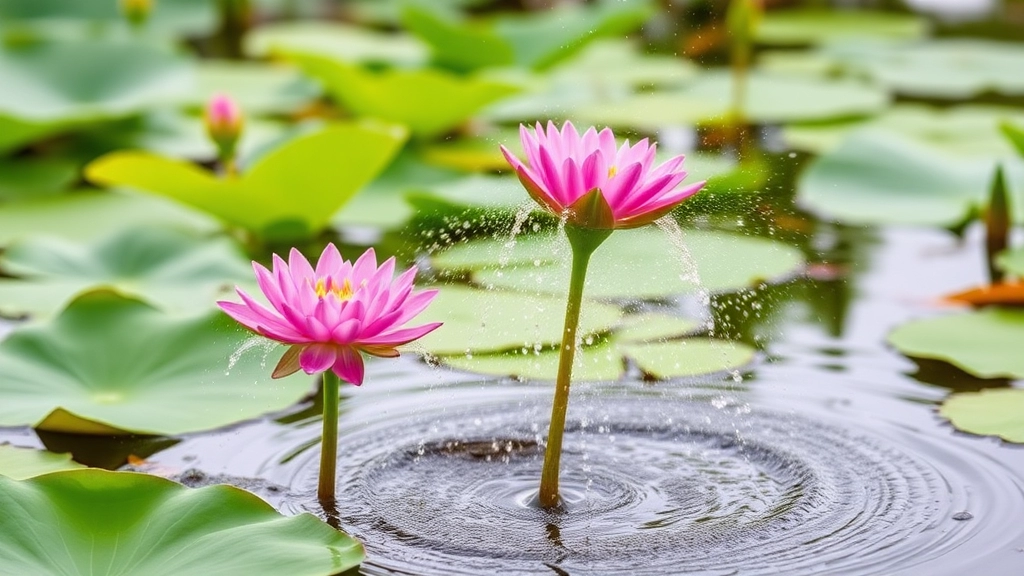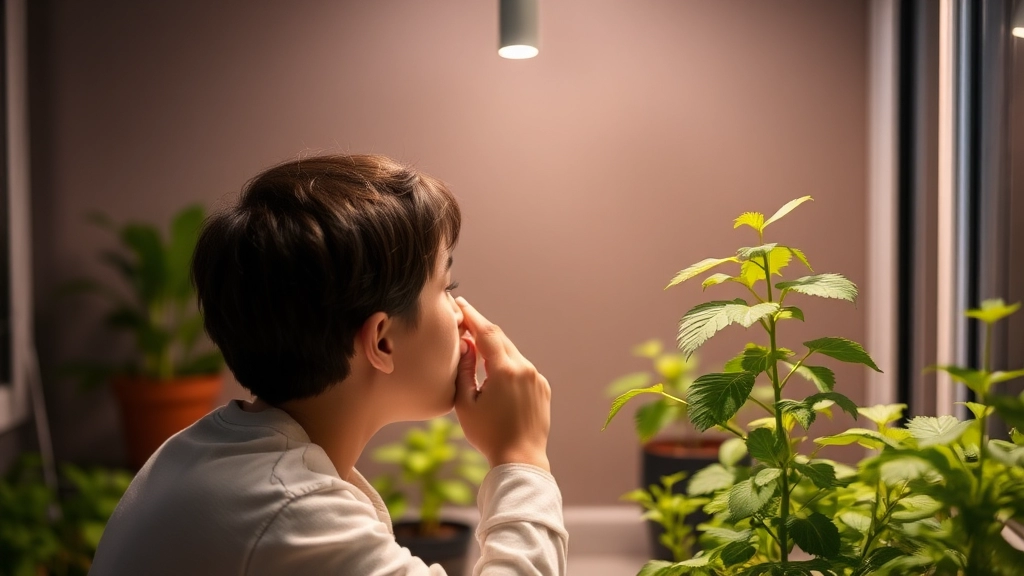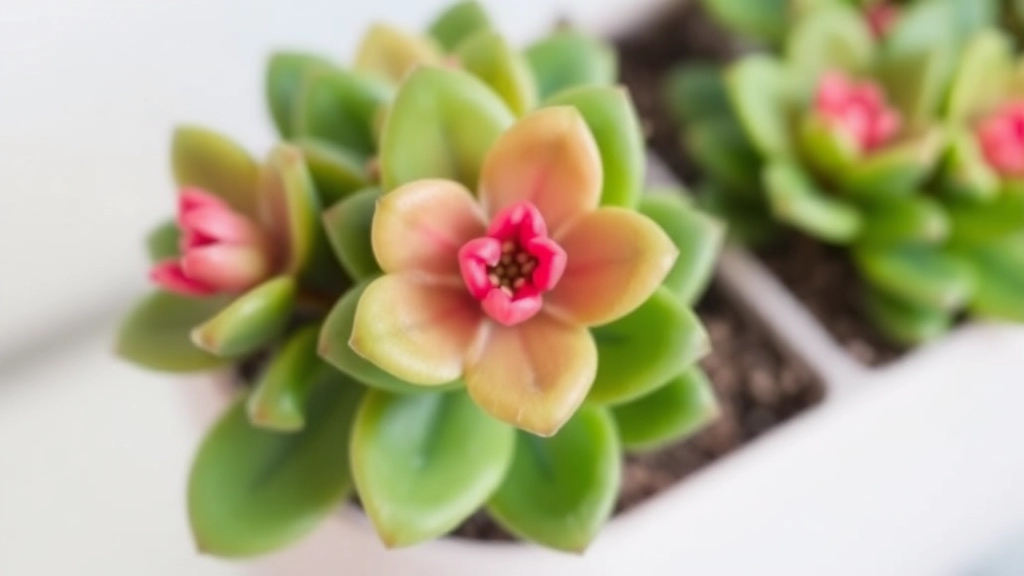Mastering the Care of Your Kalanchoe Luciae Paddle Plant
Looking to master the care of your Kalanchoe Luciae Paddle Plant? You’ve come to the right place. This striking succulent, known for its vibrant, paddle-shaped leaves, requires specific conditions to thrive. Let’s dive into the best growing conditions, watering techniques, and light preferences to keep your Paddle Plant healthy and stunning.
Growing Conditions
First, ensure your Kalanchoe Luciae gets plenty of indirect sunlight. Too much direct light can scorch the leaves, while too little can hinder its growth.
Watering Techniques
Watering is another key aspect; these succulents prefer a “soak and dry” method, meaning you should thoroughly water the soil and then allow it to dry out completely before the next watering.
Light Preferences
Proper drainage is crucial to avoid root rot, so a well-draining soil mix is essential.
Best Growing Conditions for Kalanchoe Luciae
Are you struggling to keep your Kalanchoe Luciae, also known as Paddle Plant, thriving?
Understanding the best growing conditions is crucial for ensuring this vibrant succulent flourishes in your home or garden.
Ideal Environment
Kalanchoe Luciae thrives in specific conditions that mimic its native habitat.
Here are the key factors to consider:
- Temperature: Aim for a range of 20°C to 30°C (68°F to 86°F).
- Humidity: This plant prefers low humidity levels, making it perfect for drier indoor environments.
- Air Circulation: Good airflow is essential to prevent fungal issues.
Location Matters
When choosing a spot for your Paddle Plant, consider the following:
- Indoors: A south-facing window is ideal for maximum sunlight.
- Outdoors: If you live in a warm climate, place it in a well-drained area with partial shade during the hottest part of the day.
Seasonal Adjustments
As the seasons change, so should your care routine:
- Spring and Summer: These are the active growth periods. Ensure it receives ample sunlight and warmth.
- Autumn and Winter: Reduce watering and keep it in a warmer environment, as the plant goes dormant.
For more detailed care instructions, check out our Kalanchoe Tomentosa Nigra Care Guide and learn how to propagate Kalanchoe Mother of Thousands easily.
Essential Watering Techniques for Paddle Plants

So, you’ve got your Kalanchoe Luciae, and now you’re probably wondering, “How much should I water this beauty?” Trust me, you’re not alone in this concern.
Watering a Paddle Plant isn’t just about splashing some water in the pot. It’s a bit of an art, and getting it right is crucial for keeping your plant happy and thriving.
Key Watering Tips
- Check the Soil: Before you even think about watering, stick your finger about an inch into the soil. If it feels dry, it’s time to water. If it’s still moist, hold off for a bit.
- Water Deeply, but Sparingly: When you do water, make sure to soak the soil thoroughly. Let the water drain out of the bottom of the pot. This ensures the roots get what they need without sitting in soggy soil.
- Seasonal Adjustments: During the growing season (spring and summer), your Paddle Plant might need more frequent watering. In the winter, cut back significantly. They prefer to dry out between waterings.
- Use Room Temperature Water: Cold water can shock the roots. Stick to room temperature for a more comfortable drink for your plant.
- Observe Your Plant: Yellowing leaves? That could be a sign of overwatering. If the leaves start to wrinkle, it’s a cry for more water. Keep an eye on those cues!
Soil Requirements and Potting Tips
When it comes to ensuring your Kalanchoe Luciae thrives, the right soil is essential.
Are you worried about choosing the best soil for your paddle plant?
Let’s break it down.
Soil Composition
Kalanchoe Luciae, commonly known as the paddle plant, prefers a well-draining soil mix.
Here are the key components to consider:
- Cactus Mix: A pre-made cactus or succulent mix works wonders.
- Perlite or Pumice: Adding these improves drainage and aeration.
- Organic Matter: A small amount of compost can provide essential nutrients without retaining too much moisture.
Potting Tips
Choosing the right pot is just as important as the soil.
Here’s what you should keep in mind:
- Drainage Holes: Always select a pot with drainage holes to prevent water from sitting at the bottom.
- Size: Opt for a pot that’s slightly larger than the root ball. This allows for growth but doesn’t hold excess soil that can retain moisture.
- Material: Terracotta pots are ideal as they absorb moisture and help regulate soil moisture levels.
Repotting
If your paddle plant outgrows its pot, repotting is necessary.
Here’s how to do it right:
- Choose the Right Time: Spring is the best time to repot, as the plant is entering its growing season.
- Gently Remove: Carefully take the plant out of its pot, shaking off excess soil.
- Inspect Roots: Check for any signs of rot or damage and trim if necessary.
- Add Fresh Soil: Place the plant in its new pot and fill with fresh soil, ensuring it’s secure but not compacted.
For more detailed tips on growing Kalanchoe plants, check out our ultimate guide to growing and caring for succulent plant Kalanchoe. Additionally, if you’re interested in specific care for different varieties, our Kalanchoe Beharensis care guide offers expert tips for healthy growth.
Light and Temperature Preferences for Healthy Growth

When caring for your Kalanchoe Luciae, understanding its light and temperature preferences is crucial for fostering healthy growth. Many plant enthusiasts often worry about providing the right conditions for their paddle plants.
Optimal Light Conditions
Kalanchoe Luciae thrives in bright, indirect sunlight. Here are some key points to consider:
- Direct Sunlight: While it can tolerate some direct sunlight, prolonged exposure can scorch its leaves.
- Indoor Placement: A south or west-facing window is ideal, as it provides ample light.
- Signs of Insufficient Light: If the leaves become leggy or lose their vibrant colour, your plant may need more light.
Temperature Preferences
Temperature plays a significant role in the well-being of your paddle plant. Here’s what you should keep in mind:
- Ideal Range: Kalanchoe Luciae prefers temperatures between 20°C to 30°C (68°F to 86°F).
- Cold Sensitivity: It is sensitive to cold temperatures; anything below 10°C (50°F) can be harmful.
- Humidity Levels: This plant enjoys low to moderate humidity, making it perfect for most indoor environments.
Propagation is a rewarding way to expand your collection of Kalanchoe luciae, also known as paddle plants. There are two primary methods you can use: offsets and leaf cuttings.
### Offsets
Offsets, or pups, are small plants that grow around the base of the parent plant. Here’s how to propagate using offsets:
– **Identify Offsets**: Look for healthy pups that are at least a few inches tall.
– **Separate Carefully**: Gently twist or cut the offset away from the main plant, ensuring you don’t damage the roots.
– **Let It Callous**: Allow the cut end to dry for a day or two. This helps prevent rot when planted.
– **Replant**: Place the offset in a well-draining soil mix. Water lightly and keep it in a warm, bright spot.
For more detailed steps, you might find this [step-by-step guide on propagating Kalanchoe tomentosa](https://planthq.org/how-to-propagate-kalanchoe-tomentosa-stepbystep-guide/) useful.
### Leaf Cuttings
Leaf cuttings are another effective method for propagation. Follow these steps for successful leaf cuttings:
– **Select a Healthy Leaf**: Choose a mature, healthy leaf from the parent plant.
– **Cut the Leaf**: Use a clean, sharp knife to cut the leaf into sections about 3-4 inches long.
– **Callous the Cuttings**: Lay the cuttings flat in a dry place for a couple of days to allow the cut edges to callous.
– **Plant the Cuttings**: Place the calloused end in a well-draining soil mix, ensuring it’s upright. Water sparingly until roots develop.
Both methods can yield multiple new plants, enriching your garden or home. If you’re interested in exploring more about Kalanchoe propagation, check out this [complete guide to growing Kalanchoe mother of thousands](https://planthq.org/complete-guide-to-growing-kalanchoe-mother-of-thousands/).
Common Issues and How to Avoid Overwatering or Root Rot
Let’s dive into some real concerns that many Kalanchoe Luciae owners face: overwatering and root rot.
Have you ever noticed your paddle plant drooping or turning yellow?
That’s often a sign of overwatering, which is a common mistake.
Here’s how to keep your Kalanchoe happy and healthy:
- Watering Schedule: Only water when the top inch of soil feels dry. This could be every two weeks or even less in winter.
- Pot Choice: Use pots with drainage holes. This allows excess water to escape, preventing your plant from sitting in soggy soil.
- Soil Type: Opt for a well-draining soil mix. A cactus or succulent mix works wonders. You can also add perlite or sand to improve drainage.
- Signs of Trouble: Look out for mushy stems or a foul smell coming from the soil. These are red flags for root rot. If you spot these, it’s time to act fast.
- Repotting: If you suspect root rot, gently remove the plant from its pot. Trim away any blackened or mushy roots and repot in fresh, dry soil.
Keeping these tips in mind will help you avoid the pitfalls of overwatering and ensure your paddle plant thrives. For more detailed care instructions, check out our Kalanchoe Paddle Plant Care Guide. Additionally, if you’re interested in learning about various Kalanchoe varieties, our Kalanchoe Succulent Identification Guide is a great resource.
FAQs on Kalanchoe Luciae Paddle Plant Care
How often should I water my Kalanchoe Luciae Paddle Plant?
Watering frequency depends on the season and the soil’s moisture. During the growing season (spring and summer), you may need to water more frequently. In winter, reduce watering significantly. Always check the soil’s moisture by sticking your finger about an inch deep; if it’s dry, it’s time to water.
What is the best way to water my Paddle Plant?
Water deeply but sparingly. Ensure the soil is thoroughly soaked and let the excess water drain out of the pot. This prevents the roots from sitting in soggy soil, which can cause root rot.
How can I tell if I’m overwatering or underwatering my Paddle Plant?
Observe the leaves for signs. Yellowing leaves often indicate overwatering, while wrinkling leaves are a sign of underwatering. Adjust your watering habits based on these visual cues.
What kind of light does Kalanchoe Luciae need?
The Paddle Plant thrives in bright, indirect sunlight. It can tolerate some direct sunlight but avoid prolonged exposure to prevent leaf scorching. A south or west-facing window is ideal for indoor placement.
What are the signs that my Paddle Plant is not getting enough light?
If the leaves become leggy or lose their vibrant colour, it may indicate insufficient light. Consider relocating your plant to a brighter spot.
What temperature range is ideal for Kalanchoe Luciae?
Kalanchoe Luciae prefers temperatures between 20°C to 30°C (68°F to 86°F). It is sensitive to cold temperatures, and anything below 10°C (50°F) can be harmful to the plant.
Does the Paddle Plant require specific humidity levels?
This plant enjoys low to moderate humidity, making it suitable for most indoor environments. It does not require high humidity levels to thrive.
Can I use cold water to water my Paddle Plant?
No, using cold water can shock the roots. It’s best to use room temperature water for a more comfortable drink for your plant.
References
-
How to Care for Paddle Plant (Kalanchoe Luciae)
-
Kalanchoe Luciae Care: Growing Paddle Plants
-
Better Homes & Gardens: Paddle Plant
